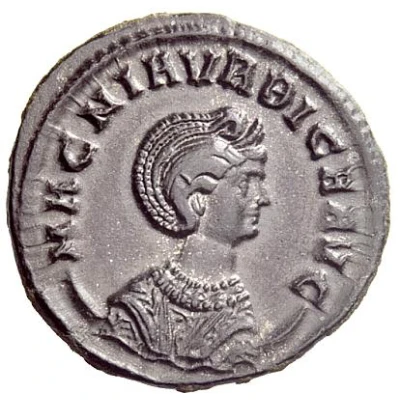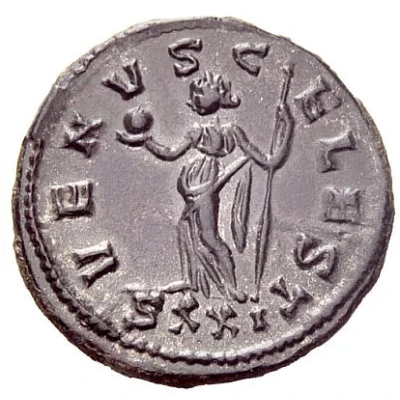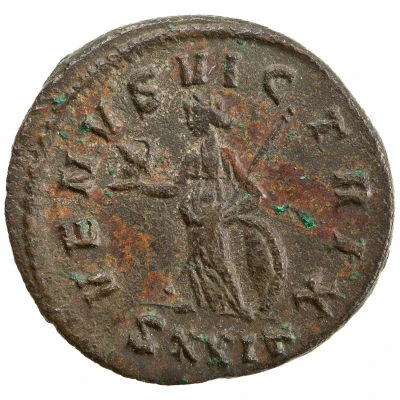Antoninianus - Magnia Urbica VENVS CELEST; Venus
| Silver | - | - |
| Issuer | Rome › Roman Empire (27 BC - 395 AD) |
|---|---|
| Empress | Magnia Urbica (282-284) |
| Emperor | Carinus (Marcus Aurelius Carinus) (283-285) Numerian (Marcus Aurelius Numerius Numerianus) (283-284) |
| Type | Standard circulation coin |
| Years | 283-285 |
| Value | Antoninianus (1) |
| Currency | Antoninianus, Reform of Caracalla (AD 215 – 301) |
| Composition | Silver |
| Shape | Round (irregular) |
| Technique | Hammered |
| Demonetized | Yes |
| Updated | 2024-10-05 |
| Numista | N#298413 |
|---|---|
| Rarity index | 100% |
Reverse
Venus, draped, standing left, holding apple in right hand and sceptre in left hand.
Script: Latin
Lettering:
VENVS CELEST
-/-//SXXI
Translation:
Venus Caelestis.
Heavenly Venus.
Comment
Source:Online Coins of the Roman Empire (OCRE)
Interesting fact
The Antoninianus coin was introduced during the reign of Emperor Carus (282-283 AD) as a replacement for the denarius, which had been the standard Roman silver coin for centuries. The Antoninianus was made of silver, but it was smaller and lighter than the denarius, with a lower silver content. Despite its lower value, the Antoninianus was still widely accepted and used throughout the Roman Empire. The coin features an image of Venus, the Roman goddess of love and beauty, on one side, and an image of the emperor on the other. The inscription "VENVS CELEST" on the coin means "heavenly Venus." The coin's design was meant to symbolize the emperor's connection to the gods and his role as a divine ruler. Overall, the Antoninianus coin is an interesting example of how currency can reflect a society's values and beliefs, as well as its economic and political systems.



